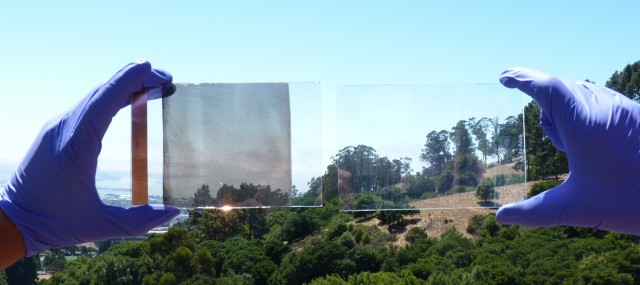New material could make for smart windows that adjust to building’s needs
Ars Technica » Scientific Method 2013-08-15

Inefficient buildings are a major cause of wasted energy, a problem that is being addressed by better materials and better ways of managing heating, cooling, and lighting. For example, some window materials can allow outside light in (cutting the need for lighting) while blocking infrared light (in turn cutting the need for air conditioning). But those are fixed solutions. If you want to let more warmth in on a cold day, they're not going to help
The solution is a smart material, one that can adjust according to the building's needs. In the most recent issue of Nature, some researchers at Lawrence Berkeley National Laboratory (joined by a colleague in Spain) report on just such a material. By passing a voltage through a specially designed glass, the researchers can switch it among three states: completely transparent, blocking infrared light, or blocking both infrared and visible wavelengths.
The new glass was based on the team's earlier work on indium-tin-oxide (ITO) nanocrystals. This material is able to absorb near-infrared light, but only if it's in the right electronic state (the ability depends on having enough free electrons around). Since glasses aren't crystalline materials, ITO crystals are inappropriate for use in this application, at least in bulk.
Read 8 remaining paragraphs | Comments




